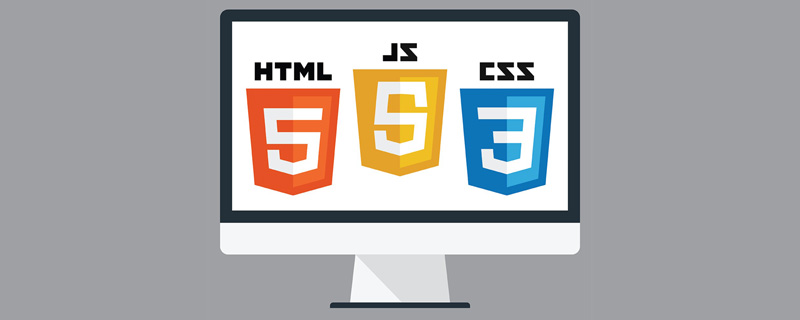 Web Front-end
Web Front-end JS Tutorial
JS Tutorial What does the js prototype chain consist of? What role does it play in inheritance?
What does the js prototype chain consist of? What role does it play in inheritance?Combining the following picture and a simple example, you can first understand the relationship between the constructor, the prototype object and the instance object. Let's first look at this simple description diagram.

This picture describes the relationship between constructor, prototype object and instance object: The prototype chain is basically based on the relationship between these three
From the above figure, we can see that each constructor has a prototype object (prototype), and the prototype object has a pointer to the constructor. Pointer, pointing to the constructor itself
Note: the prototype attribute only exists in the function, the prototype attribute does not exist in the object, but the _proto_ attribute exists in all objects
The following is an example to illustrate the relationship between them. The following example corresponds to the above picture.

First we define a constructor of A and then new one Instance object a
1.A.prototype represents the prototype object two attributes constructor and _proto_
2.A.prototype.constructor===A Prototype object The attribute constructor attribute corresponds to the constructor itself
3.A.prototype===a.__proto__ From the above figure, we can see that the _proto_ of the instance object points to the prototype object
4.a.__proto__===A.prototype The _proto_ attribute of instance object a points to the prototype object
5.a Instance object a has a common attribute _proto_
Combined with the above figure and With this simple example, you can figure out the relationship between these three
Let’s talk about how the js prototype chain revolves around these relationships. Let’s look at a picture first

This picture is not much different from the first picture, but it represents the process of searching for a prototype chain chain.
Now I will use an example to illustrate. Please think about it based on this picture and the case. Easier to understand
# We added the name attribute to both the instance object a and the prototype object. When we print a.name, the result is 111.
But when we delete the name attribute of instance object a and read a.name, the result is 222.
This is because if the name attribute is not found in the a object, it will be searched from the prototype of a, which is a.__proto__
, which is A.prototype. Since the search is in A.prototype When the name attribute is found, the result is 222.
Here, if we do not find the name attribute on A.prototype, because A.prototype is also an object and has a _proto_ attribute,
So the prototype of the A.prototype prototype is A.prototype._proto_
So A.prototype.__proto__===Object.prototype is true
The prototype of A.prototype is Object.prototype then Object. The prototype of prototype._proto_ can be seen from the example above as null
Note: null is a special value but its type is an object but it has no attributes, so there is no prototype to find null. When the prototype chain ends
So this prototype chain a--A.prototype--Object.prototype--null is the blue process line above
If I understand the above operations and explanations, I can understand the process and operations of the prototype chain. However, there is still a lot to do when applying it to code design.
Inheritance is in OO language An important thing. Many OO languages support two inheritance methods: Interface inheritance and Implementation inheritance. Interface inheritance only inherits the method signature, while implementation inheritance inherits the actual method. Since There is no signature for methods in js, and interface inheritance cannot be achieved in ECMAScript. ECMAScript only supports implementation inheritance, and its implementation inheritance is mainly achieved by prototype chain.
Related articles:
JavaScript inheritance and prototype chain
JS inheritance--prototype chain inheritance and class inheritance
Related videos:
JS development verification form tutorial
The above is the detailed content of What does the js prototype chain consist of? What role does it play in inheritance?. For more information, please follow other related articles on the PHP Chinese website!
 如何使用JS和百度地图实现地图平移功能Nov 21, 2023 am 10:00 AM
如何使用JS和百度地图实现地图平移功能Nov 21, 2023 am 10:00 AM如何使用JS和百度地图实现地图平移功能百度地图是一款广泛使用的地图服务平台,在Web开发中经常用于展示地理信息、定位等功能。本文将介绍如何使用JS和百度地图API实现地图平移功能,并提供具体的代码示例。一、准备工作使用百度地图API前,首先需要在百度地图开放平台(http://lbsyun.baidu.com/)上申请一个开发者账号,并创建一个应用。创建完成
 js字符串转数组Aug 03, 2023 pm 01:34 PM
js字符串转数组Aug 03, 2023 pm 01:34 PMjs字符串转数组的方法:1、使用“split()”方法,可以根据指定的分隔符将字符串分割成数组元素;2、使用“Array.from()”方法,可以将可迭代对象或类数组对象转换成真正的数组;3、使用for循环遍历,将每个字符依次添加到数组中;4、使用“Array.split()”方法,通过调用“Array.prototype.forEach()”将一个字符串拆分成数组的快捷方式。
 如何使用JS和百度地图实现地图热力图功能Nov 21, 2023 am 09:33 AM
如何使用JS和百度地图实现地图热力图功能Nov 21, 2023 am 09:33 AM如何使用JS和百度地图实现地图热力图功能简介:随着互联网和移动设备的迅速发展,地图成为了一种普遍的应用场景。而热力图作为一种可视化的展示方式,能够帮助我们更直观地了解数据的分布情况。本文将介绍如何使用JS和百度地图API来实现地图热力图的功能,并提供具体的代码示例。准备工作:在开始之前,你需要准备以下事项:一个百度开发者账号,并创建一个应用,获取到相应的AP
 如何使用JS和百度地图实现地图多边形绘制功能Nov 21, 2023 am 10:53 AM
如何使用JS和百度地图实现地图多边形绘制功能Nov 21, 2023 am 10:53 AM如何使用JS和百度地图实现地图多边形绘制功能在现代网页开发中,地图应用已经成为常见的功能之一。而地图上绘制多边形,可以帮助我们将特定区域进行标记,方便用户进行查看和分析。本文将介绍如何使用JS和百度地图API实现地图多边形绘制功能,并提供具体的代码示例。首先,我们需要引入百度地图API。可以利用以下代码在HTML文件中导入百度地图API的JavaScript
 js中new操作符做了哪些事情Nov 13, 2023 pm 04:05 PM
js中new操作符做了哪些事情Nov 13, 2023 pm 04:05 PMjs中new操作符做了:1、创建一个空对象,这个新对象将成为函数的实例;2、将新对象的原型链接到构造函数的原型对象,这样新对象就可以访问构造函数原型对象中定义的属性和方法;3、将构造函数的作用域赋给新对象,这样新对象就可以通过this关键字来引用构造函数中的属性和方法;4、执行构造函数中的代码,构造函数中的代码将用于初始化新对象的属性和方法;5、如果构造函数中没有返回等等。
 用JavaScript模拟实现打字小游戏!Aug 07, 2022 am 10:34 AM
用JavaScript模拟实现打字小游戏!Aug 07, 2022 am 10:34 AM这篇文章主要为大家详细介绍了js实现打字小游戏,文中示例代码介绍的非常详细,具有一定的参考价值,感兴趣的小伙伴们可以参考一下。
 php可以读js内部的数组吗Jul 12, 2023 pm 03:41 PM
php可以读js内部的数组吗Jul 12, 2023 pm 03:41 PMphp在特定情况下可以读js内部的数组。其方法是:1、在JavaScript中,创建一个包含需要传递给PHP的数组的变量;2、使用Ajax技术将该数组发送给PHP脚本。可以使用原生的JavaScript代码或者使用基于Ajax的JavaScript库如jQuery等;3、在PHP脚本中,接收传递过来的数组数据,并进行相应的处理即可。
 js是什么编程语言?May 05, 2019 am 10:22 AM
js是什么编程语言?May 05, 2019 am 10:22 AMjs全称JavaScript,是一种具有函数优先的轻量级,直译式、解释型或即时编译型的高级编程语言,是一种属于网络的高级脚本语言;JavaScript基于原型编程、多范式的动态脚本语言,并且支持面向对象、命令式和声明式,如函数式编程。


Hot AI Tools

Undresser.AI Undress
AI-powered app for creating realistic nude photos

AI Clothes Remover
Online AI tool for removing clothes from photos.

Undress AI Tool
Undress images for free

Clothoff.io
AI clothes remover

AI Hentai Generator
Generate AI Hentai for free.

Hot Article

Hot Tools

SublimeText3 Chinese version
Chinese version, very easy to use

Dreamweaver Mac version
Visual web development tools

WebStorm Mac version
Useful JavaScript development tools

Notepad++7.3.1
Easy-to-use and free code editor

SecLists
SecLists is the ultimate security tester's companion. It is a collection of various types of lists that are frequently used during security assessments, all in one place. SecLists helps make security testing more efficient and productive by conveniently providing all the lists a security tester might need. List types include usernames, passwords, URLs, fuzzing payloads, sensitive data patterns, web shells, and more. The tester can simply pull this repository onto a new test machine and he will have access to every type of list he needs.






